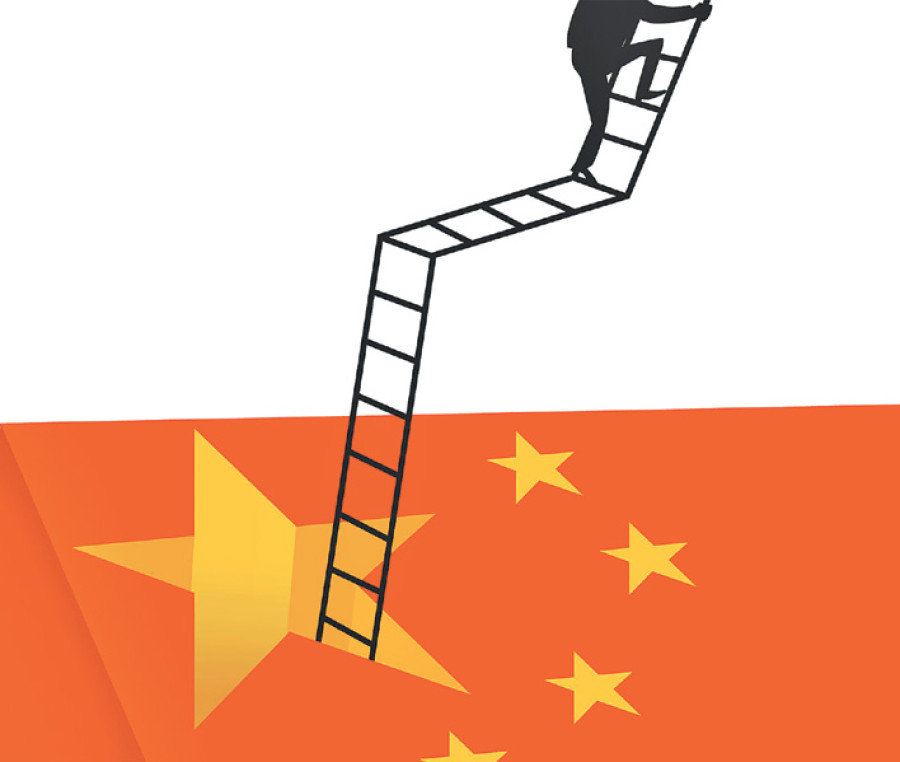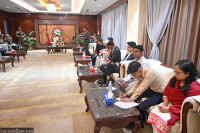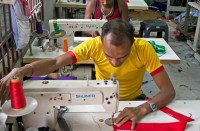Opinion
South Asian corridor
South Asia and China have a multi-dimensional relationship that cuts across increasingly large swathes of each other’s economic, diplomatic and security interests.
South Asia and China have a multi-dimensional relationship that cuts across increasingly large swathes of each other’s economic, diplomatic and security interests. The relationship is characterised by a mix of ‘competition and cooperation’, with the balance of these elements varying by issue and region, and fluctuating according to broader trends in bilateral ties. The two sides are deeply embedded in a global economic order that requires the free movement of commerce and capital, providing a significant shared interest in the fundamental stability of the international system, from energy supplies to global finance.
Asian giants
Overall, the growth prospects of the emerging Asian economies (South Asia, China and India) are expected to remain robust over the medium term amid global economic uncertainty. The Organisation for Economic Cooperation and Development (OECD) predicts that China’s slowing growth rate will fall gradually from 6.7 percent in 2016 to an average of 6 percent per year over 2017-21. India, on the other hand, will have a high and relatively stable growth over the projection period at an average of 7.3 percent. Private consumption will continue to be an important factor of growth in most countries. India’s demonetisation drive could deter its anticipated growth; however, tax revenues could swell in the long run.
Much of the deficit will be compensated through export trade. Liberalising reforms could help to support robust growth and improve the currently weak levels of private investment.
China’s growth rate slipped to its slowest in more than a quarter of a century in 2016, and analysts see mounting risks for the world’s number two economy with Donald Trump in the White House. While the Asian giant is a key engine for the global economy, affecting businesses and employment across the planet, its leaders are trying to shift from the reliance on exports and infrastructure boom. And now, Beijing has another headache with Trump threatening to impose massive tariffs on Chinese goods for what he calls indulging in unfair trade practices and being a currency manipulator. America’s trade diktat and Trump’s possible drift on the One-China policy may lead to a renewed trade and bilateral order in the existing Sino-American equilibrium with resultant effects on South Asia.
Rising ambitions
Claire Huang of Societe Generale has a differing perspective while defining the existing situation. He says, “For China’s economy to transform from investment-led to consumption-led without relying too much on credit, a slowdown is necessary.” Indeed, it is against this backdrop that China is actively pursuing plans to invest an estimated $150 billion on its One Belt One Road (OBOR) project connecting countries in Asia and Europe via rail, road, energy pipeline, sea lanes and port infrastructure. The belt manifests the continental dimension of this geostrategic realm.
The greatest irony today is that South Asian economies are separately striking free trade agreements in goods and services with countries across the seas but not among themselves even though they share borders. If the OBOR project becomes a reality over the next decade, there is bound to be much greater trade among the economies that get hyper connected by the OBOR infrastructure. Once countries located along OBOR foresee the positive economic and trade benefits, they will be enticed to pitch in with their own funds to supplement the much anticipated common Silk Road infrastructure.
The continuing shift in the axis of economic power to the east will force South Asian economies to naturally look at institutionalising the South Asia Free Trade Agreement’s (Safta) connection with Central Asia and China in a win-win framework. The larger global dynamic will make this happen faster even if state actors are slow in recognising this. These are historically driving forces which state actors typically recognise after a lapse of time. Indeed, deeper economic integration within South Asia, as also between South Asia and China, is embedded within the larger framework of China’s attempt to build massive rail, road and port infrastructure across Central Asia, Afghanistan and Pakistan, thereby dramatically shortening cargo transport time between Asia and Europe/Africa/Middle East.
Way forward
China’s grand OBOR plan could power the growth of Asia and the world in the next two to three decades. Institutions like the Asian Infrastructure Investment Bank, which counts China, India and even European countries as its members, will partly finance the growth of such infrastructure. Within this larger project, everyone foresees South Asia benefiting immensely through deeper trade connectivity with global markets, and both India and Pakistan may foresee chances of getting aboard this mega development framework in anticipation of the concept of national ‘benefits’.
The Chinese government has put forward openness, tolerance, balance and universal benefit as the principles, and joint discussion, joint construction and shared benefits complementing each other’s advantages and mutual benefits as the common ideas. The participating countries at this juncture visualise themselves not only as ‘a community of interests’, but indeed as ‘a community of fates’. This idea has gained recognition from the international community and provided spiritual impetus for the construction of an economic corridor. And South Asian economies are looking at this perspective as an opportunity instead of as a threat. However, all member states have to fine tune their internal deterrents instead of overlaying emphasis on principled growth.
China and India are the two key players in this economic corridor with more intelligence and development potential in the international comity of strong nations. The two countries should maintain close cooperation and create favourable conditions for the construction of this economic corridor, so that the spirit binds all other proximate countries to head towards tangible development with integration.
Baral was the foreign affairs advisor to the late former prime minister GP Koirala




 19.12°C Kathmandu
19.12°C Kathmandu









